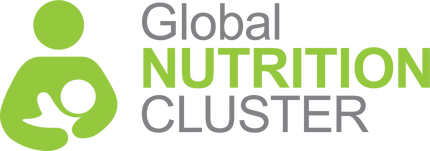Request support on coordination, information management, integration for nutrition outcomes or technical nutrition in emergencies assistance.
التماس الدعم لتنسيق التغذية وإدارة المعلومات والتغذية في حالات الطوارئ
Demander un appui pour la coordination de la nutrition, la gestion de l'information et la nutrition dans les situations d'urgence
Buscar apoyo para la coordinación de la nutrición, la gestión de la información y la nutrición en situaciones de emergencia
Solicite apoio para coordenação em nutrição, gestão de informação e nutrição em emergências
Madagascar
OtherCoordination mechanism: Cluster
Year of activation: 2018 - official IASC activation 2021.
Coordination arrangement:
- National level: Office National de Nutrition (ONN) Lead, Ministry of Health (nutrition service), Co-lead, UNICEF Co-coordinatro
- Regional level: Office Régional de Nutrition (ORN) Lead and Direction Régionale de la Santé Publique (DRSP) Co-lead in the 3 southern regions of Madagascar (Anosy, Androy and Atsimo-Andrefana) and 3 regions in South East Madagascar (Atsimo-Atsinanana, Vatovavy, Fitovinany)
- District level: Service de District de la Santé Publique (SDSP) Lead and Office Régional de Nutrition (ORN) Co-lead in 21 districts in the 6 Regions
RALAIMIADANA Andriamihamintsoa Rabenja
Chef de Service de la Nutrition Ministere de la Santé Publique benjandriamihamina@yahoo.comAnnual Report 2023
January - December 2023
The nutritional situation in the Grand South and Southeast of Madagascar remains concerning despite slight improvement.
In the Grand Southeast, it remains critical, especially for landlocked districts such as Nosy Varika and Ikongo. Classified as IPC 3 and above for several years, their MAG prevalence exceeded 10% in the SMART survey in May 2023. These two districts also require a multisectoral analysis of the root causes and effects of interventions, as well as the development of specific action plans, along with additional deployment of funds, humanitarian actors, and programs.
Resource and partner mobilization remain a challenge, especially for community-level actions, including MAM care.
Secure access to health centers and difficult-to-reach community sites is problematic. The development of a specific protocol for the treatment of high-risk MAM, following the new WHO guidelines, could be a better solution to increase coverage and ensure continuity of care and SAM-MAM treatment in the Southeast.
In the Grand South, during the latest SMART survey in April 2023, nearly half of the districts had a prevalence of acute malnutrition exceeding 10%, despite response and resilience activities carried out by the humanitarian community.
Anticipatory multisectoral actions need to be developed and coordinated to reduce the negative consequences of climate change on the nutritional situation in this drought-prone region. The ANJE U program, the strengthening of nutrition surveillance, and nutrition-sensitive resilience activities should be scaled up.
At national level
As the cluster/sector strategy in Madagascar focuses on localization, with increased leadership of local authorities and technical services, their capacity strengthening needs further support from all cluster partners at the local level. The developments in the ANJE U program, adolescent and women's nutrition, and the new WHO guidelines on the prevention and management of acute malnutrition necessitate the updating of the national protocol to ensure better coverage and continuity of care and SAM-MAM treatment.
The early warning system still needs improvement to ensure immediate scaling up of the response when needed and more precise targeting of the most affected areas.
| Advocacy Survey | |
| Country Advocacy Strategy developed | No |
| Link to document | |
| Advocacy activities included in annual work plan | No |
| Specific WG leading advocacy work established | Yes |
| Preparedness | |
| Contingency plan or ERP plan developed/updated | Yes |
| Link to document | |
| Intersectoral Collaboration (ISC) | |
| Intersectoral projects currently under implementation | No |
| Clusters engaged | |
| Discussion in progress with WASH, Health and Food Security cluster for common targeting. | |
Key Figures
(million)Funding
(million)- Children 6-59 months
- Pregnant and Lactating Women
Total Partners
48
